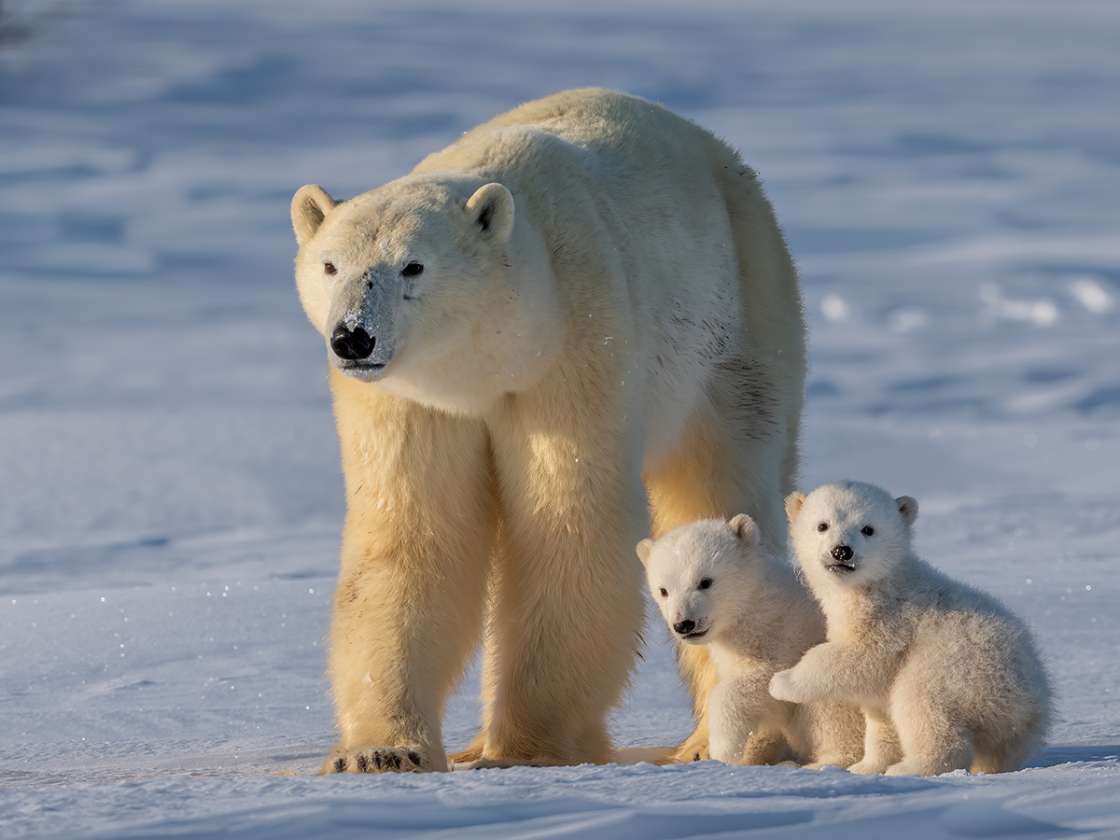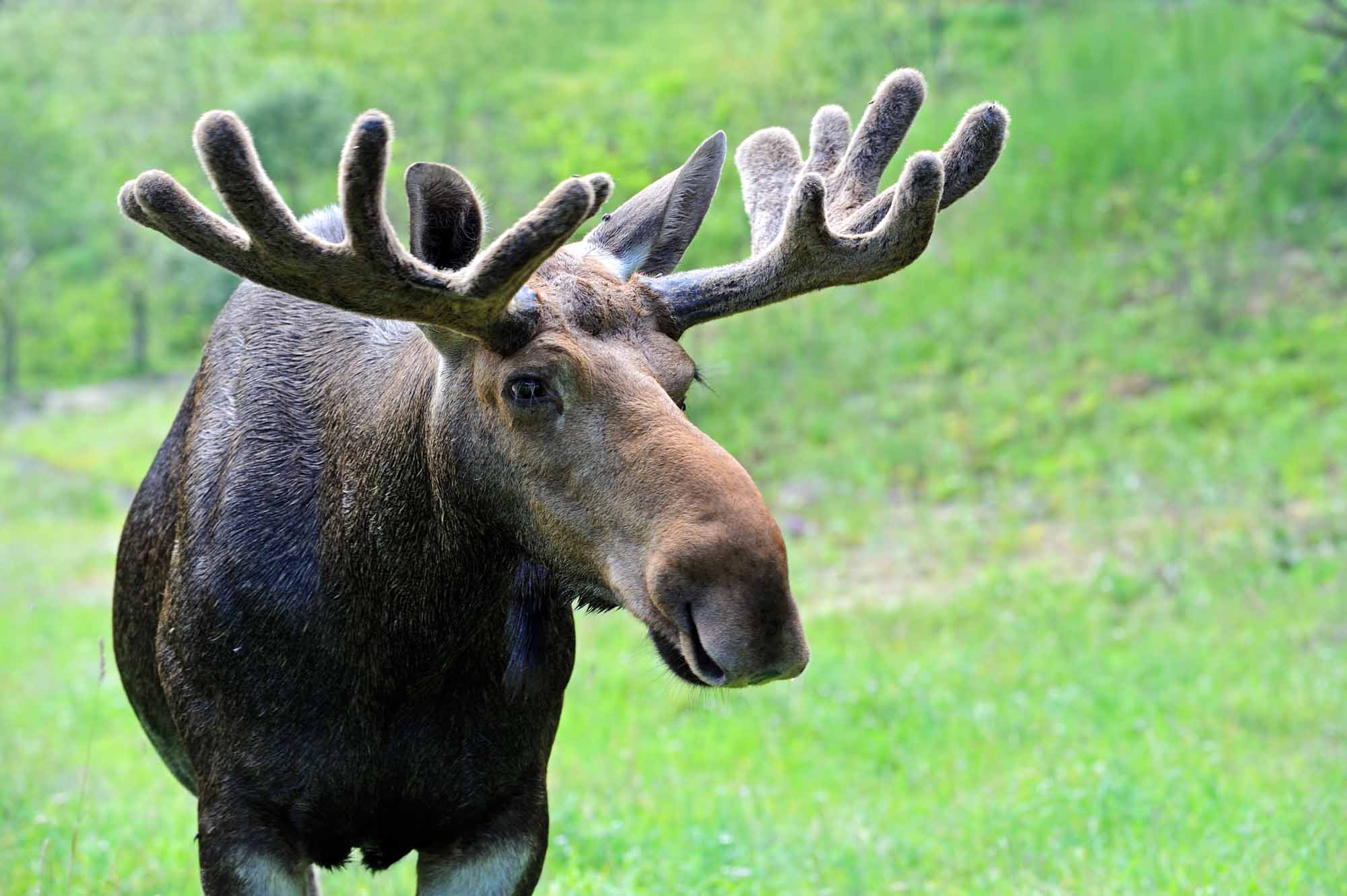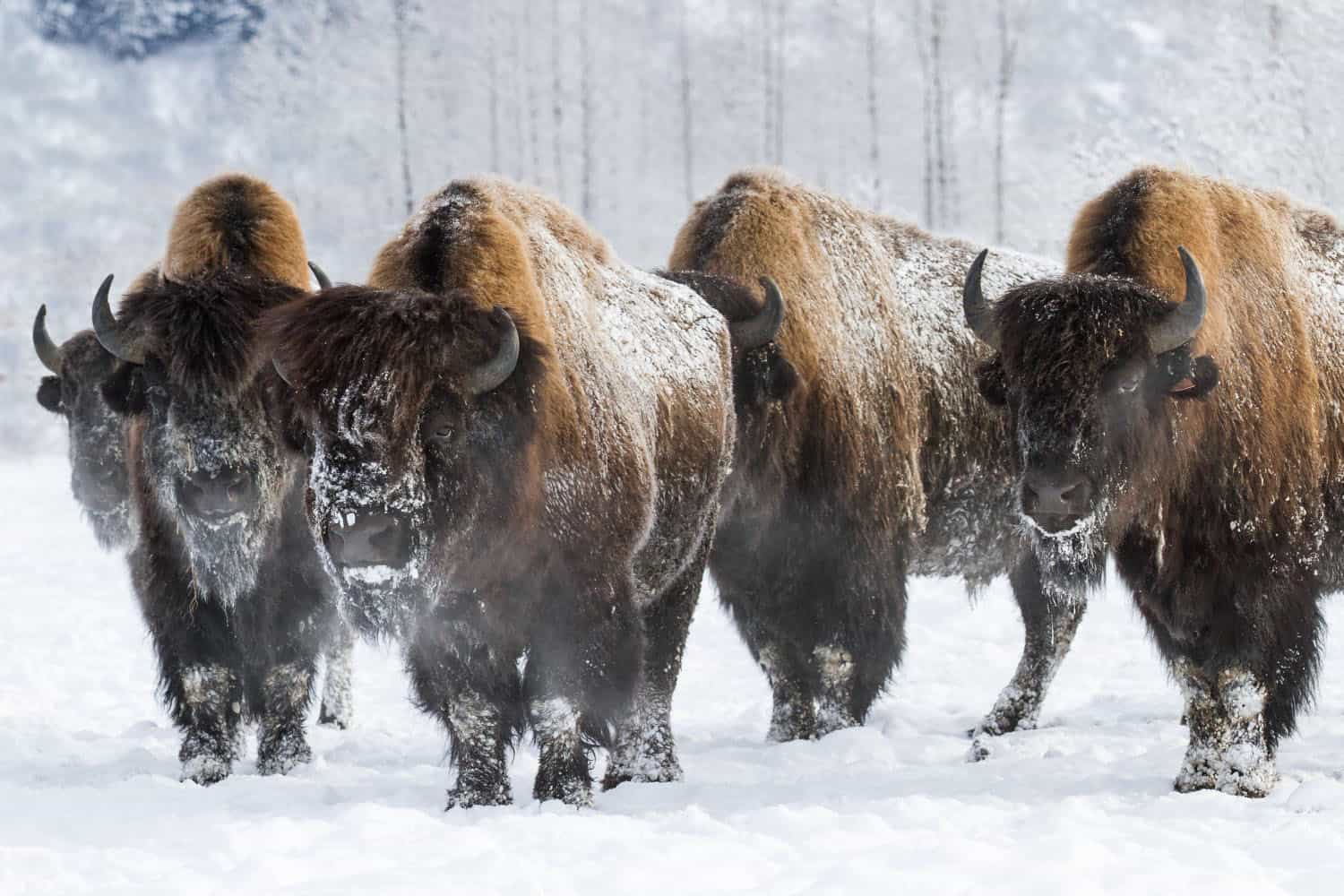Canada is a country renowned for its natural beauty and diverse wildlife. From the majestic moose to the playful beaver, Canada is home to some of the coolest animals in the world. Whether you’re a wildlife enthusiast or simply looking to experience the natural wonders of Canada, there are plenty of opportunities to see these incredible creatures up close.
In this article, we’ll explore the top 10 coolest animals you can find roaming Canada, including where to see them and what makes them so special. So, grab your binoculars and get ready for an unforgettable adventure!
You are reading: Discover The Top 10 Coolest Animals You Can Find Roaming Canada

Top 10 Coolest Animals You Can Find Roaming Canada
Moose

Moose are the largest living member of the deer family and are found in nearly every region of Canada, except the Arctic and Vancouver Island. There are four subspecies of moose found in Canada, including the Alaska/Yukon moose, which is the largest subspecies.
Moose typically inhabit boreal forests and temperate broadleaf and mixed forests of the Northern Hemisphere in temperate to subarctic climates.
The moose population is abundant in some areas of Canada, such as New Brunswick and Newfoundland, but is endangered in mainland Nova Scotia.
Moose are estimated to number between 500,000 and 1 million in Canada. Algonquin Park in Ontario is one of the best places in the world to spot moose, with plenty of opportunities to see bull moose, cows, and calves in their natural habitat.
Black Bear
Black bears are one of the most common bears found in Canada, and are widely distributed throughout the country. They are an omnivorous species, with their diet varying depending on the season and location.
Black bears are typically found in forested areas, but will leave forests in search of food, and are sometimes attracted to human communities due to the availability of food.
While not considered a threatened species, black bears are sometimes hunted for sport in Canada. Due to their relatively robust numbers, black bears are not considered a species at risk in Canada.
If you ever encounter a black bear, the best way to scare it away is by maing yourself look as big as possible. It is important to take precautions when camping or hiking in bear country, such as storing food properly and carrying bear spray.
Grizzly Bear
Read more : The Top 6 Largest And Most Dangerous Snakes In Arkansas
Grizzly bears, also known as North American brown bears, are a subspecies of the brown bear that inhabit North America. They are a massive animal with humped shoulders and an elevated forehead that contributes to a somewhat concave profile.
Grizzly bears are typically brown, though their fur can appear to be white-tipped, or grizzled, lending them their name. They are omnivores, with their diet consisting of plants, fish, rodents, carrion, and hoofed animals like moose, elk, caribou, and deer.
Grizzly bears are mainly solitary and territorial, except for mothers and their cubs, or when a plentiful food source is discovered. They are known to congregate at rivers with many fish and at improperly stored food sources in human communities.
Grizzly bears are not considered a threatened species in Canada, but are sometimes hunted for sport.
Arctic Wolf
Arctic wolves, also known as polar wolves or white wolves, are a subspecies of the gray wolf that inhabit the Arctic regions of North America and Greenland. Here are some interesting facts about Arctic wolves:
– Arctic wolves are carnivorous hunters that help to control the populations of other animals in the region like the musk ox, caribou, and Arctic hares.
– They are medium-sized wolves, distinguished from other subspecies by their smaller size, whiter coloration, narrower braincase, and larger carnassials.
– Since 1930, there has been a progressive reduction in size in Arctic wolf skulls, which is likely the result of wolf-dog hybridization.
– The Arctic wolf is not threatened by hunting and habitat destruction in the same way as its southern relatives, and is classified as “least concern” by the International Union for Conservation of Nature (IUCN).
– In 1997, there was a decline in the Arctic wolf population and its prey, muskoxen and Arctic hares, due to unfavorable weather conditions during the summers for four years. Arctic wolf populations recovered the next summer when weather conditions returned to normal.
While Arctic wolves are not commonly seen by humans due to their remote habitat, they are a fascinating and important part of the Arctic ecosystem.
Polar Bear
Polar bears are one of the most iconic animals in the world, and are native to the Arctic regions of North America and Eurasia. Here are some interesting facts about polar bears:
– Polar bears are the largest extant bear species and the largest extant land carnivore, with adult males weighing around 350-700 kg (770-1,540 lb).
– Polar bears are classified as marine mammals because they spend most of their lives on the sea ice of the Arctic Ocean, depending on the ocean for their food.
– Polar bears are hypercarnivorous, with their diet consisting mainly of seals, but they will also eat fish, birds, and other mammals.
– Polar bears are not considered a threatened species in Canada, but are classified as “vulnerable” by the International Union for Conservation of Nature (IUCN) due to expected habitat loss caused by climate change.
– The polar bear has been a key figure in the material, spiritual, and cultural life of circumpolar peoples for thousands of years, and polar bears remain important in their cultures.
– The chief threat to the polar bear is the loss of its sea ice habitat due to climate change, which is melting the Arctic sea ice they depend on.
Polar bears are a fascinating and important part of the Arctic ecosystem, and their survival is closely linked to the health of the Arctic environment.
Bighorn Sheep
Bighorn sheep are a species of sheep native to North America, known for their large horns. Here are some interesting facts about bighorn sheep:
– There are three distinct subspecies of bighorn sheep found in North America: the Rocky Mountain bighorn sheep, the Sierra Nevada bighorn sheep, and the desert bighorn sheep.
– Bighorn sheep are named for the large, curved horns borne by the rams (males). Ewes (females) also have horns, but they are shorter with less curvature.
– Bighorn sheep are hunted for their meat and horns, which are used in ceremonies, as food, and as hunting trophies. They also serve as a source of ecotourism, as tourists come to see the bighorn sheep in their native habitats.
– Bighorn sheep have a dramatic history that includes reaching near extinction and making a significant recovery with the help of conservation efforts.
– Bighorn sheep populations are threatened by a variety of factors, including competition with domestic livestock for forage and water, disease transmission from domestic livestock, collision mortality associated with highways, military bombing on training reservations, herbicide/insecticides/fatal plants on golf courses, climate change increasing temperatures and decreasing rainfall, and habitat loss associated with housing and recreational vehicle use in increasingly steep terrain (including lambing habitat).
Bighorn sheep are a fascinating and important part of the North American ecosystem, and their survival is closely linked to the health of their habitats.
Wood Bison

Wood bison, also known as mountain bison, are a distinct northern subspecies or ecotype of the American bison. Here are some interesting facts about wood bison:
– Wood bison are the larger of the two subspecies of modern American bison, with adult males weighing up to 2,000 pounds.
– Their original range included much of the boreal forest regions of Alaska, Yukon, western Northwest Territories, northeastern British Columbia, and northwestern Alberta.
– Wood bison are herbivorous grazers that feed primarily on grasses, sedges, and forbs. Due to frequent and heavy snowfall in their native habitat, food availability fluctuates throughout the year, leading to a diverse and varied diet.
– Wood bison are beneficiaries of a natural law known as Bergmann’s rule due to their sheer size. Their increased body mass over their southern cousin, the plains bison, produces a larger surface area to volume ratio, which helps them retain heat in cold environments.
– Wood bison were hunted to near extinction in the early 20th century, with their numbers crashing to fewer than 300. However, conservation efforts have helped to restore their populations, and they are now classified as “threatened” by the International Union for Conservation of Nature (IUCN).
– Wood bison are the largest Canadian terrestrial mammal, with a dark brown coat, a massive head, a high hump on their large shoulders, and long shaggy hair on their forelegs and necks.
Read more : Learn About All Of The Major Deer Species
Wood bison are a fascinating and important part of the North American ecosystem, and their restoration is a testament to the power of conservation efforts.
Atlantic Puffin
The Atlantic puffin, also known as the common puffin, is a species of seabird in the auk family and is the only puffin native to the Atlantic Ocean. Here are some interesting facts about Atlantic puffins:
– Atlantic puffins have penguin-like coloring but they sport a colorful beak that has led some to dub them the “sea parrot”.
– The best time to find Atlantic puffins is during the breeding season, from late April through August, when they come ashore to nest on islands.
– Puffins live most of their lives at sea, resting on the waves when not swimming. They are excellent swimmers that use their wings to stroke underwater with a flying motion and steer with rudder-like webbed feet.
– Puffins typically hunt small fish like herring or sand eels, and can dive to depths of 200 feet, though they usually stay underwater for only 20 or 30 seconds.
– Atlantic puffins breed in burrows on islands in Russia, Iceland, Ireland, Norway, Greenland, Newfoundland and Labrador, Nova Scotia, and the Faroe Islands, and as far south as Maine in the west and France in the east.
– Puffin chicks are known as “pufflings”. At the ages of 4-6, pairs of puffins often become mates for life, finding each other at their breeding colony year after year.
Atlantic puffins are a fascinating and colorful part of the North Atlantic ecosystem, and are a popular subject for birdwatchers and tourists alike.
Caribou
Caribou, also known as reindeer, are a species of deer with circumpolar distribution, native to Arctic, subarctic, tundra, boreal, and mountainous regions of Northern Europe, Siberia, and North America. Here are some interesting facts about caribou:
– Caribou are known for their impressive antlers, which are shed and regrown each year.
– They are herbivores, feeding on lichens, grasses, and other vegetation.
– Caribou are an important part of the culture and economy of many indigenous peoples in the Arctic, who rely on them for food, clothing, and other resources.
– Caribou populations are threatened by a variety of factors, including habitat loss, climate change, and hunting.
– In Canada, the largest herd of caribou is the George River herd, which migrates between Quebec and Labrador and is estimated to number around 27,000 individuals.
– Caribou are also an important part of the food chain in the Arctic, providing food for predators like wolves, bears, and humans.
Caribou are a fascinating and important part of the Arctic ecosystem, and their survival is closely linked to the health of their habitats.
Beaver
Beavers are large, semiaquatic rodents that are native to the Northern Hemisphere. They are the second-largest living rodents, after capybaras, weighing up to 50 kg. Here are some interesting facts about beavers:
– Beavers are herbivores that prefer to eat leaves, bark, twigs, roots, and aquatic plants. They have strong teeth and powerful jaws that they use to fell and gnaw trees, creating massive log, branch, and mud structures to block streams and turn fields and forests into the large ponds that beavers love.
– Beavers are famously busy, and they turn their talents to reengineering the landscape as few other animals can. They burrow in the banks of rivers and lakes, but they also transform less suitable habitats by building dams.
– Beavers are unique among rodents in that they build scent mounds, heaps of mud, sticks, and grass up to one-third of a meter high and about a meter wide on which they deposit scents from their anal glands.
– Beavers are able to live on land and in water, and are powerful swimmers that can swim underwater for up to 15 minutes. They communicate outside of their family unit by depositing scents around the edges of their territory.
– Beavers are still harvested for their fur and meat but are actively managed throughout most of their range. The beaver’s main predator, besides humans, is the wolf.
– Beavers are an important part of the ecosystem, creating wetlands that provide habitat for many other species. They are also an important part of human culture, symbolizing industriousness and construction, and are the national animal of Canada.
Beavers are fascinating and important animals that play a vital role in shaping the landscape and supporting other species.
FAQS
1. What are the top 10 coolest animals you can find in Canada?
The top 10 coolest animals you can find in Canada include moose, black bear, grizzly bear, Arctic wolf, polar bear, bighorn sheep, wood bison, Atlantic puffin, caribou, and beaver.
2. Where can I see these animals in Canada?
These animals can be found in various regions of Canada, including national parks like Wood Buffalo National Park, Jasper National Park, and Banff National Park. Some of the best places to see specific animals include Algonquin Park for moose, Churchill for polar bears, and the Canadian Rockies for bighorn sheep and black bears.
3. Are these animals endangered in Canada?
While some of these animals are considered threatened or vulnerable, such as the polar bear and wood bison, most are not considered endangered in Canada.
4. Can I hunt these animals in Canada?
Some of these animals, such as black bears and bighorn sheep, are hunted for sport in Canada. However, hunting regulations and restrictions vary by province and territory, and some animals are protected from hunting altogether.
5. Are these animals dangerous to humans?
While some of these animals, such as grizzly bears and polar bears, can be dangerous to humans, they generally avoid human contact if possible. It is important to take precautions when camping or hiking in bear country, such as storing food properly and carrying bear spray.
Source: https://petstutorial.com
Category: Animals










